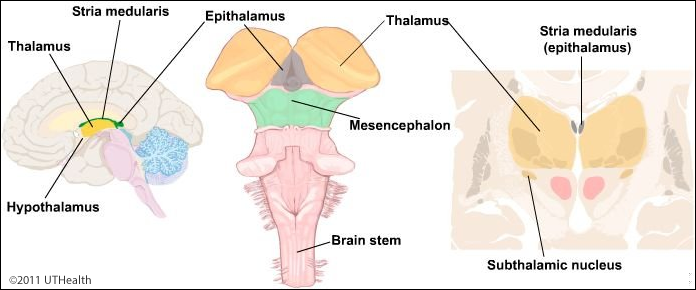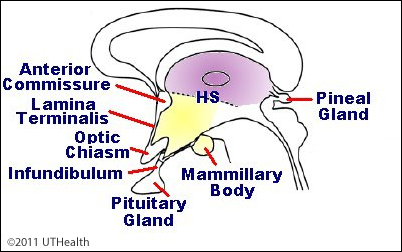Lab 10 (ƒ2) - Internal Organization of the Brain
The Diencephalon
The diencephalon consists of four parts: the Epithalamus, Hypothalamus, Thalamus and Subthalamus.

 The thalamus is a collection of nuclei that have sensory, motor or association function. All sensory information traveling to the cerebral cortex (except for the olfactory pathway) reaches it by way of a thalamic nucleus with sensory function.
The thalamus is a collection of nuclei that have sensory, motor or association function. All sensory information traveling to the cerebral cortex (except for the olfactory pathway) reaches it by way of a thalamic nucleus with sensory function.
The second major structure of the diencephalon is the hypothalamus. This area exerts important controls over visceral and endocrine activities. The hypothalamus is the major subcortical center for the regulation of both sympathetic and parasympathetic autonomic activities. The Lamina Terminalis and anterior commissure mark its rostral border, the Mammillary Bodies mark its caudal border, and the Hypothalamic Sulcus (HS) mark its superior border. The medial border is the floor of the Third Ventricle.
The activity of the Pituitary Gland is controlled by the hypothalamus. The gland is joined to the inferior aspect of the diencephalon at the Infundibulum.
The two major structures of the diencephalon seen in the hemisected brain are the thalamus and hypothalamus. We will concentrate on these two structures in this laboratory.
